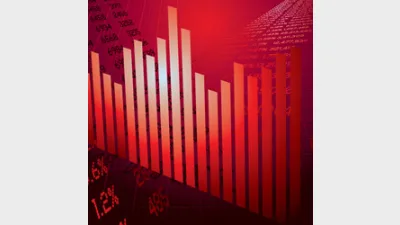Understanding risk in asset allocation: cash, bonds and equities



Elizabeth Moran looks at the broad risk-and-return characteristics of three investment classes: cash, bonds and equities in the Australian market between October 1989 and January 2012.
Understanding the underlying risk of your asset allocation will help increase the consistency of your returns and minimise possible portfolio losses in any one year.
Overwhelmingly, the greater use of bonds in asset allocation, both on a static and dynamic basis, appears to be appropriate based on the available data.
 Australia has a high allocation to equities, relative to other member countries of the Organisation for Economic Cooperation and Development (OECD), as Figure 1 indicates.
Australia has a high allocation to equities, relative to other member countries of the Organisation for Economic Cooperation and Development (OECD), as Figure 1 indicates.
Figure 1 shows Australian pension funds have the third-highest allocation to equities – roughly 47 per cent, when compared to other OECD countries.
Recent equity performance has been poor and pension fund returns have been low, if positive, so perhaps it is time for us to reassess our portfolio allocations, by shifting the focus to risk and- return and away from simply the return side of the equation.
Asset class risk-and-return
Many investors focus on return when determining asset allocation, but risk and the possibility of loss or loss of income should also be taken into account.
Investors should be asking themselves, “Does the return on offer compensate for the risk involved?”
That is, “Am I being paid enough to compensate for a return which may be lower than my expectations and could include a possible loss?”
 The annual risk of each asset class is very different as shown in Figure 2 – equities have a much higher risk, when compared to bonds and cash.
The annual risk of each asset class is very different as shown in Figure 2 – equities have a much higher risk, when compared to bonds and cash.
Risk is calculated by looking at the standard deviation of return. Standard deviation is a statistical measure of variability, which shows how much variation exists around the other main attribute of investment – the average return.
A low standard deviation indicates the investment returns something very close to the average return, most of the time; it is a reliable investment.
Figure 2 shows that cash has a very low standard deviation of less than 1 per cent, but bonds also have a low standard deviation of 4 per cent. Conversely, a high standard deviation implies greater variability of return.
Equities, with a standard deviation of 15 per cent, fit this description. Thus equities have more than three times the annualised risk when compared to bonds.
Equity investors avoid the tough question of risk by typically looking at the average return.
Recent experience with equity returns underlines the fact that looking at average return has its pitfalls, as losses can be close to one another or fall in consecutive years, which a return focused analysis doesn’t adequately highlight.
Specifically, investors need to consider the likelihood of average returns being delivered, not just the level of those average returns.
 Importantly, even after equity investors accept that additional risk, they are not offered all that much extra return, as Figure 3 shows.
Importantly, even after equity investors accept that additional risk, they are not offered all that much extra return, as Figure 3 shows.
The important thing to note is the ratio of risk-to-return, with Figure 4 showing cash is best and equities are worst.
 These relationships are summarised in Figure 5, on the scatter plot below.
These relationships are summarised in Figure 5, on the scatter plot below.
Asset allocation
In order to assess the performance of these allocations, investors need to consider the risk, as well as the return, from asset allocations.
 Several types of allocations are available:
Several types of allocations are available:
- Static allocations, such as the typical ‘balanced’ allocation of 75 per cent equities and 25 per cent bonds, and the opposite, 25 per cent equities and 75 per cent bonds
- Dynamic allocations, which alter the allocation to equities over time.
Static allocations
(1) ‘Balanced’75 per cent equities and 25 per cent bonds
Australians have a unique view of a ‘balanced’ asset allocation. While the rest of world takes a much more conservative approach, Australians seem to agree that an allocation of 75 per cent equities and 25 per cent bonds is a ‘balanced’ portfolio.
 Yet, if investors focused on risk, then this allocation is anything but “balanced”; the strategy is dominated with equity risk, as shown in Figure 6.
Yet, if investors focused on risk, then this allocation is anything but “balanced”; the strategy is dominated with equity risk, as shown in Figure 6.
(2) 25 per cent equities and 75 per cent bonds
A conservative allocation, of 25 per cent to equities and 75 per cent to bonds, has a much more balanced risk attribution, as Figure 7 indicates.
 Dynamic allocation
Dynamic allocation
If risk is so important to asset allocation, then risk may assist in the allocation procedure itself.
Specifically, we can express the annual return of the most risky asset class, equities, as a function of annual risk, in Figure 8.
 Here a 19 per cent negative annual return and a 19 per cent annual risk estimate would equate a negative 1.
Here a 19 per cent negative annual return and a 19 per cent annual risk estimate would equate a negative 1.
In the alternative, a 38 per cent annual return with a 19 per cent annual risk estimate would equate a positive 2.
One of the most interesting aspects of Figure 8 is the way it standardises all rolling annual returns across time, and it shows that equities begin to perform typically when the annualised return/risk is observed to be under -1.33.
In addition, equity returns have a tendency to fall after return increases through two standard deviations. Hence, a possible dynamic allocation might be one where the first static allocation is used (75 per cent equities, 25 per cent bonds) where a reading of lower than -1.33 is recorded.
Investors could then hold that allocation until a reading of two standard deviations is observed, when investors would then switch back to Static Allocation 2 (25 per cent equities, 75 per cent bonds).
 Specifically, Figure 9 shows when the switch occurs; hold the 25 per cent equities/75 per cent bond portfolio where the graph is shaded in blue and hold the 75 per cent equities/25 per cent bond portfolio where the graph is shaded red.
Specifically, Figure 9 shows when the switch occurs; hold the 25 per cent equities/75 per cent bond portfolio where the graph is shaded in blue and hold the 75 per cent equities/25 per cent bond portfolio where the graph is shaded red.
By being more dynamic, the returns might be improved, when compared to either static allocation, as summarised below.
In fact, investors can allocate to equities, through Static Allocation 1, less than 20 per cent of the time and beat the static allocation return while reducing risk substantially.
 Most of the time, over 80 per cent, Static Allocation 2 is used, where 75 per cent bonds are held and 25 per cent equities, as shown in Table 1.
Most of the time, over 80 per cent, Static Allocation 2 is used, where 75 per cent bonds are held and 25 per cent equities, as shown in Table 1.
However, the most important benefit of either the dynamic allocation, or Static Allocation 2, is the reduction in risk that occurs.
Dynamic allocation cuts risk by over 4 per cent, which is near 40 per cent of the risk in Static Allocation 1, while Static Allocation 2 cuts risk by over 6 per cent, which is more than 50 per cent of the risk in Static Allocation 1.
Lower risk will enhance the certainty of return; something that Australians have not had in the past, yet something they need in the future.
Why Australians seem to think that a ‘balanced’ fund comprises 75 per cent equities does not make sense, when the risk they face is clearly not balanced.
Where ‘balance’ comes from remains unclear, when such a risky asset class, like equities, is matched with a low-risk asset class, like bonds.
In reality a 75 per cent weighting to equities, with 25 per cent bonds, is just an equity portfolio; there is no ‘balance’.
Investors can cut risk roughly in half, by using the Dynamic Allocation or Static Allocation 2, with return rising slightly with dynamic allocation, and falling by around 1 per cent for Static Allocation 2.
Conclusion
If nothing else, this article emphasises the risk implications of asset allocation. Instead of looking at return, investors need to think of risk, and then allocate according to a combination of asset classes that provides good risk-adjusted return.
Even on a static basis, by allocating 75 per cent to bonds, investors can cut risk by half, while only cutting return by 1 per cent, when compared to the typical ‘balanced’ allocation of 75 per cent equities and 25 per cent bonds.
On a dynamic basis, using risk analysis to standardise annual returns, investors can achieve much better results, while being 75 per cent in bonds more than 80 per cent of the time.
While there might be times to increase equity holdings to the typical ‘balanced’ level of 75 per cent, these occasions comprise less than 20 per cent of occurrences, between October 1989 and January 2012, if the above trading rule is implemented.
Elizabeth Moran is the director of education and fixed income research at FIIG Securities.
Recommended for you
In this episode of Relative Return Insider, host Keith Ford and AMP chief economist Shane Oliver unpack the RBA’s decision to keep the cash rate on hold in the face of rising inflation and whether the governor’s hawkish tone is a sign of things to come.
In this episode of Relative Return Insider, host Keith Ford and AMP chief economist Shane Oliver discuss the September quarter GDP figures, which show Australia’s economy regaining momentum.
In this new episode of The Manager Mix, host Laura Dew speaks to Haley Devine, head of wealth management at MaxCap Group, to delve into private credit and commercial real estate.
In this new episode of The Manager Mix, host Laura Dew speaks to Benjamin Leung, head of systematic investments at Macquarie Asset Management, to understand the use of systematic investments.







